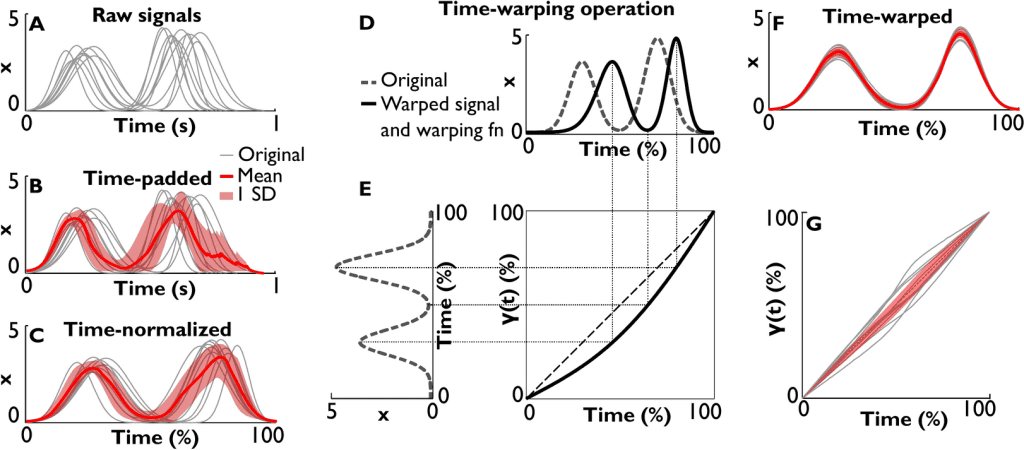In the world of processes—be it manufacturing workflows, digital transactions, or hospital operations—time often behaves like a trickster. It stretches, compresses, and distorts, creating illusions of difference where none truly exist. Imagine two orchestras playing the same symphony: one at dawn, brisk and energetic; the other at dusk, slow and reflective. Though their tempos differ, the melody remains identical. This is where time warping enters the stage—a method that listens beyond tempo to recognise the essence of a process.
The Dance of Time: Understanding Temporal Variability
Every process carries its own rhythm. Two customer service calls, two loan approvals, or two patient admissions may follow the same pattern of actions but take different durations. Traditional comparison techniques judge processes harshly when timing diverges, much like comparing dancers who move at different speeds but follow the same choreography. Time warping, however, bends and adjusts the time axis so that similar patterns align, allowing analysts to see the fundamental similarities beneath temporal noise.
Here, time is not a rigid ruler but a flexible ribbon. By stretching and compressing it, we can match sequences that would otherwise appear disjointed. This method, often referred to as Dynamic Time Warping (DTW), brings empathy into analytics—it acknowledges that two processes can be equivalent even if they don’t march in lockstep. Those taking Data Analytics classes in Mumbai often encounter this technique while studying how to analyse real-world processes with inherent variability.
Aligning the Beats: How Time Warping Works
Imagine tracing two signatures. One written hastily and the other slowly—both belong to the same person, yet traditional comparison metrics might label them differently. Time warping solves this by aligning corresponding points even if they occur at unequal intervals. It dynamically stretches one trace to fit another, preserving structural similarity while forgiving timing discrepancies.
At its core, time warping calculates a cost matrix that evaluates how much distortion is needed to align two sequences optimally. The lower the cost, the more similar the processes. The technique is invaluable in domains like manufacturing, healthcare, and software process mining, where tasks rarely occur with mechanical precision. It’s as if time itself becomes a negotiator, ensuring fairness in comparison rather than rigid enforcement.
From Symphonies to Systems: Real-World Applications
Consider a hospital analysing patient treatment paths. Two patients diagnosed with the same condition might receive identical care but at different paces—one admitted for more extended observation, the other discharged swiftly. A naïve system might mark them as dissimilar, missing the insight that both followed the same clinical logic. Time warping bridges that gap, revealing that they are, in essence, variations of the same symphony.
In financial institutions, loan approval workflows can vary dramatically depending on the complexity of a case. Analysts applying time warping can detect deviations that genuinely matter—like skipped verification steps—while ignoring irrelevant time-based fluctuations. In digital transaction monitoring, it distinguishes between a genuine delay and a structural anomaly, helping risk teams prioritise what truly needs attention. Professionals learning through Data Analytics classes in Mumbai often practise such use cases, applying time warping to real datasets to discover latent process similarities.
The Mathematics Beneath the Music
Time warping operates through an elegant combination of distance measurement and dynamic programming. The algorithm constructs a grid where one axis represents the first trace and the other the second. Each cell measures how “far apart” two events are in behaviour or timestamp. The algorithm then searches for a path through this grid that minimises cumulative distortion—the optimal warping path. This path reflects how much each segment of one trace must be stretched or compressed to mirror the other.
Unlike static comparisons, which fix events to specific timestamps, this flexible alignment accounts for human behaviour, machine delays, or system lags. The process is computationally heavy but increasingly efficient with modern optimisation techniques and GPU support. What emerges is not merely a comparison but a synchronisation of meaning—an understanding that the soul of a process often lies beyond its clock.
Seeing Through the Fog: Benefits and Limitations
Time warping doesn’t just improve accuracy—it enhances understanding. By removing time bias, analysts can focus on structural and logical differences, the kind that indicate genuine process improvement opportunities or compliance risks. It’s particularly effective in environments where timing variability is natural, such as customer interactions, production lines, or automated service chains.
However, it’s not a silver bullet. Over-flexibility can mask meaningful deviations. Stretching too much can make truly different processes appear similar, blurring critical distinctions. The key lies in balance—setting alignment constraints and cost thresholds to ensure interpretability. Used wisely, it transforms process comparison from a mechanical task into a nuanced investigation.
The Human Element: Why It Matters
At its heart, time warping embodies a human truth—we rarely perform identically every time, yet our intent remains consistent. In process mining, this translates to systems that can understand variation without misjudgment. Just as a conductor recognises that each performance has its tempo, analysts learn to appreciate the rhythm of operations without punishing natural delay.
By aligning not just timestamps but intentions, time warping helps organisations see their processes with empathy and precision. It reveals harmony in apparent chaos and consistency in apparent noise—a reminder that processes, like people, deserve to be understood in context.
Conclusion: Bending Time to Reveal Truth
Time warping is more than a technical adjustment; it’s a philosophical shift. It teaches analysts to look beyond the surface of numbers and recognise the underlying cadence of operations. In comparing process traces, it transforms rigidity into flexibility and confusion into clarity.
In an era where efficiency and adaptability define success, techniques like time warping help organisations see the whole picture—one where differences in pace don’t overshadow unity in purpose. Whether applied in hospitals, factories, or digital systems, it bridges the temporal divide, letting data sing in synchrony once again.


